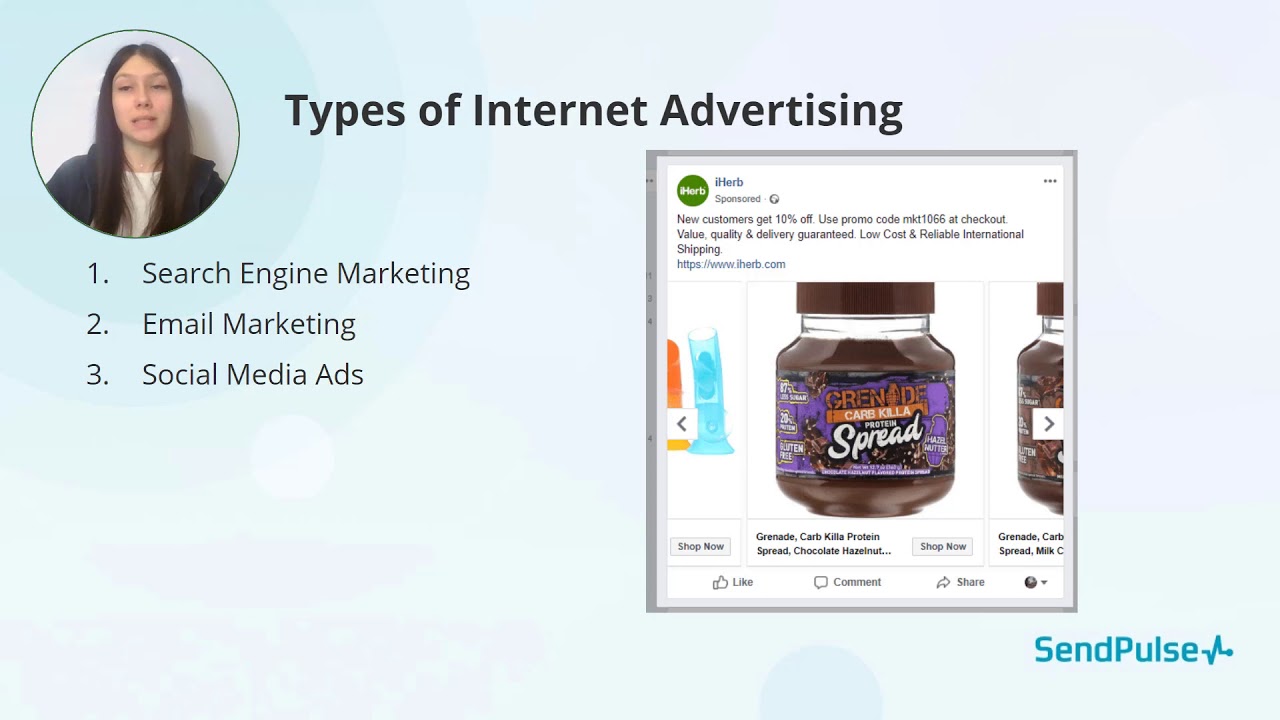
So, you have decided to launch your own digital advertising strategy. What's next? You'll find out in this article how to go about the process. This includes choosing your channel, researching your audience, and then the final step. This article will also show you how to create a customer journey and split test your strategy. This will allow you to see if your new strategy works for your brand. If it doesn't work, don't worry. There are many other businesses who have had the same question: "How do I start a digital marketing strategy?"
Researching your audience
To create a digital marketing strategy, you need to research your audience. Quantitative research involves analyzing large numbers and creating statistical results. If you are looking to create an email campaign that targets a particular audience, for example, you will need to identify their pain points and interests. Similarly, you can look at their purchase history to determine their purchasing behavior. This allows you to target your marketing messages to specific audiences.
A successful digital marketing strategy requires you to get to know your audience. You will not be able understand their wants and needs if you don't conduct research. Research can help you to identify these issues and create personalized content for them. Doing research will allow you to anticipate their needs and help you market more effectively. Here are some ways to research your audience.
Interviews: You can use surveys to better understand your audience. Interviews can be conducted with customers, published customer reviews on social media and sent to existing customers. These surveys will give you valuable information on what makes your audience tick. You can then create your digital marketing strategy. Researching your audience is crucial, but it's also essential to create a compelling campaign. This will enable you to reach your audience and increase sales.
Segmentation: You can tailor your message to your audience by understanding their preferences, interests, lifestyle. Moreover, segmentation will help you create a stronger message and engage with them in a more personal way. Adidas sent a specific email targeting women, while the clothing manufacturer categorised its customers by gender. A survey asking customers to rate the retailer would give an average score of 8/10.
Choose your channels
Choosing digital marketing channels is an essential aspect of promoting your product or service. Your objectives, competition, budget, as well as your primary objectives should be considered when choosing a digital marketing channel. Different channels can produce different results so make sure you choose the right channel for you. Depending on the channel you choose, what content you share with your audience will determine which format you use for your ads. While content marketing is still the most effective form of marketing and will continue to be relevant, you should make use of these channels if you want your audience to see it.

The decision to use a particular digital marketing channel will depend on the goals of your business. Set your short-term and long-term goals. Long-term goals could include increasing revenue by 20% in the next two-years. Short-term goals might include generating 400 qualified leads within six to eight months, or increasing website traffic by 70% in just eight months. So that you can decide which channels will work best, it is important to clearly identify your short-term (and long-term) goals.
Make sure you analyze each channel's effectiveness before you decide which channels are best. Each channel has its strengths, weaknesses, freedoms, and limitations. You should identify the content type and costs you will require for each channel. You should make sure you have all of your budget available before you begin using new channels as part of your digital marketing strategy. Facebook or Twitter is the best way to generate buzz.
Creating a customer journey
Customer journey maps are an important part of a digital marketing strategy. These maps depict the journey a customer takes to get from decision making to taking action. The customer experience map can be used in many ways. It can show the customer's journey through the sales funnel, up to the point where they become a loyal customer. A customer journey map can help you identify areas where you can make improvements.
A customer journey map is essentially a prospect's journey to purchase. It assists marketers in mapping out the questions and pain points that they encounter as they go. The higher-funnel stages aim to create awareness and interest while the final stages focus on fostering brand loyalty. This begins with awareness. You can achieve this through social media, word-of-mouth, search engine suggestions or blogs.
After researching and learning about a brand, potential customers begin the information-gathering phase of the customer journey. Initially, they don't know who you are, but they know what they want. In this stage of the Customer Journey, brands should have content that aids customers to make informed decisions. To help customers overcome any remaining obstacles during the purchasing process, brands may offer a free trial period.
Marketers will be able to use customer journey maps to target their advertising campaigns by understanding the steps customers take before purchasing a product. Each stage of a customer journey should be identified as a buyer persona. Marketers can tailor their marketing campaigns according to the goals of each stage by identifying these. Marketers can use a customer journey map to better understand their audience. It will help them identify what motivates each stage in the customer's decision making process.
Split testing your strategy
You can improve your business profitability by using split testing in several aspects of your digital marketing strategy. These areas include page copy, headlines, buttons text, images and social sharing buttons. Email marketing is also a good option. Below are some scenarios that you could test. Split testing can be used to determine which marketing strategies will lead to increased sales and profitability. Use the right sample size. Split testing should be done regularly and should be conducted with an appropriate confidence rating.
Split testing can help you determine if certain marketing strategies are working or not, and where to make changes to maximize their effectiveness. Split testing helps you monitor whether your online marketing strategy generates leads and brings in returns. Split testing lets you test out different versions of a website or specific elements. You can use the split test results to determine if your website makes money. You can then make adjustments to your digital marketing strategy once you know which variants are generating more leads.

ClickFunnels lets you test 6 different versions a single advertisement to get ideas for split-testing. Another good place to get ideas for split tests is on Facebook. Facebook offers many examples of Facebook ads. You can also copy these to see which ones work best. Landing pages are also ideal locations to test split tests. For example, moving your CTA below the fold increased conversions by 304%, while removing it from the landing page caused cart abandonment rates to decrease by 33%.
Split testing is an essential component of conversion optimization. Split testing refers to dividing traffic between two groups, the control group and the variant. Split testing involves splitting traffic so that 50% of the traffic is shown the control variation, and the rest the variant. Splitting traffic into equal segments is used to show the variant version to each segment in a multivariate experiment. Split testing is a great way to improve your digital marketing strategy.
Measuring its success
Measuring the results of your digital marketing strategy is a key step in creating a successful one. There are many ways to do this, including tracking the number and quality of conversions. You can also use other metrics to assess the effectiveness of a campaign such as page views. These metrics can help you determine the success or failure of a campaign depending on your target audience and to evaluate the effectiveness of an individual marketing initiative.
To evaluate the success your digital marketing campaigns, you must track key performance indicator (KPIs) to gauge its success. KPIs are quantifiable metrics that track how your marketing team performs against a specific goal or objective. These targets may be high-level, or low-level. These KPIs can be useful in identifying success of a campaign. They provide a level of accuracy that can serve as a guide for future campaigns.
It is also crucial to establish specific objectives for measuring your digital marketing strategy. Consider, for example, how many visits did your website get? Is your website inviting purchase? Are your email marketing campaigns generating more business? Are you getting new business? How many people read your email and purchased? These are just a few examples of what you need to track to determine whether your digital marketing strategy is working. It all comes down to your objectives, your goals, as well as the digital marketing strategy.
FAQ
How can a content strategy help me get a better ranking?
A content strategy involves planning how much content you want to produce over time. It also includes keywords, topics, and other information about the company. Having this plan in place before you start writing will ensure that you don't produce too little or too much content.
How can I get started with SEO for my site?
Understanding what people are searching for in search engines such as google is the first step to getting a Google rank. This guide will assist you in writing content that Google ranks high. Check out our other guides about content marketing.
First, create a plan. Next, consider the type of keywords that you wish to target. There are two types if keywords: broad keywords like "digital market" and specific keywords like "seo".
You'll then need to decide on a few goals - driving leads, increasing brand awareness, or boosting sales.
Once you've defined your objectives, you're ready to start writing content! Here are some SEO-friendly tips.
After you have written your content, it is time to post it to your website or blog. If you have a site, this could mean updating the pages. If you do not have a website you can hire a web designer to create one.
Once you have published your content, make sure to link it to other websites and blogs. This will make your content more visible and increase its exposure.
How much does SEO cost?
SEO is a long-term commitment so you won’t see immediate returns. However, it's important to remember that the more people find your site, the more likely it is to rank higher in search engines.
Price of each service depends on many factors such as location, keyword competitiveness, audience size, competition and price.
How much does SEO cost?
SEO costs can vary depending on the company's size, industry, budget, and other factors. Smaller companies may only require a few hundred dollars per month, while larger companies will likely spend thousands per month. To estimate how much SEO will cost you, use our SEO calculator.
What are the differences between SEO strategies?
Search engine optimization (SEO), search media optimization (SMO), as well as pay-per click advertising (PPC) are all examples of different SEO strategies.
SEO is the process of optimizing content for keywords using text formatting, HTML codes, and other features.
This makes your site appear higher on search results pages.
Meanwhile, social media optimization (SMO) involves optimizing your website for social networks such as Twitter, Facebook, and Google+.
These can help you build your online reputation and increase traffic to your site when people search for related topics.
PPC ads are also displayed at the top search results pages and show relevant products or services.
Google paid search advertisements are the most well-known type of PPC advertisement. These ads are expensive but extremely effective.
However, several other forms of PPC advertising are available - including display ads, video ads, and sponsored posts.
How do I create an SEO strategy?
To create an effective SEO strategy, you must first understand what you want and how you intend to achieve it. This allows you structure your content to meet these goals.
Next, you need to begin working on keywords. You can gain insight into the keywords people use to search for certain words by doing keyword research. You can then write articles around these topics using this information.
After writing your articles ensure that you include your target keywords in them. You should also optimize each article by including relevant images and videos. If possible, you should also link to other related sites.
Now it's time for you to optimize the content that you have written.
Statistics
- : You might have read about the time that I used The Content Relaunch to boost my organic traffic by 260.7%: (backlinko.com)
- 64% of marketers actively create SEO campaigns because they help hit multiple key performance indicators (KPIs), including increasing traffic, helping your site rank for relevant keywords, improving your conversion rate, and much more. (semrush.com)
- A 62.60% organic traffic boost to that page: (backlinko.com)
- Which led to a 70.43% boost in search engine traffic compared to the old version of the post: (backlinko.com)
- If two people in 10 clicks go to your site as a result, that is a 20% CTR. (semrush.com)
External Links
How To
How to create a successful SEO campaign
If you do creative writing, you've got to learn how to separate yourself from the pack.
You will find that many writers are very alike. Writing follows the same patterns. They repeat the same patterns and fall back upon cliches.
Breaking out from old patterns and coming up with new ideas is the key. That means thinking outside the box.
It means looking for ways to make your writing more entertaining. It is important to consider the personality of your audience when you write for them. What keeps them interested? What makes them laugh? What makes them smile?
What excites them most? What scares you?
These are the questions you should ask yourself when you write. Ask yourself why you think someone would care about your words. Why would anyone want to read your words?
Once you have this information, you can start to write your story.
Start with your hook. Your opening line should be a key part of your message. This is the first impression that readers will get of you. So choose wisely.
Next, you need to decide if your piece will be informative or persuasive. Informational pieces explain facts. Persuasive pieces convince readers to agree with you.
Next, decide whether you will tell stories or provide examples. Stories are fascinating. Examples are a great way to see how something works.